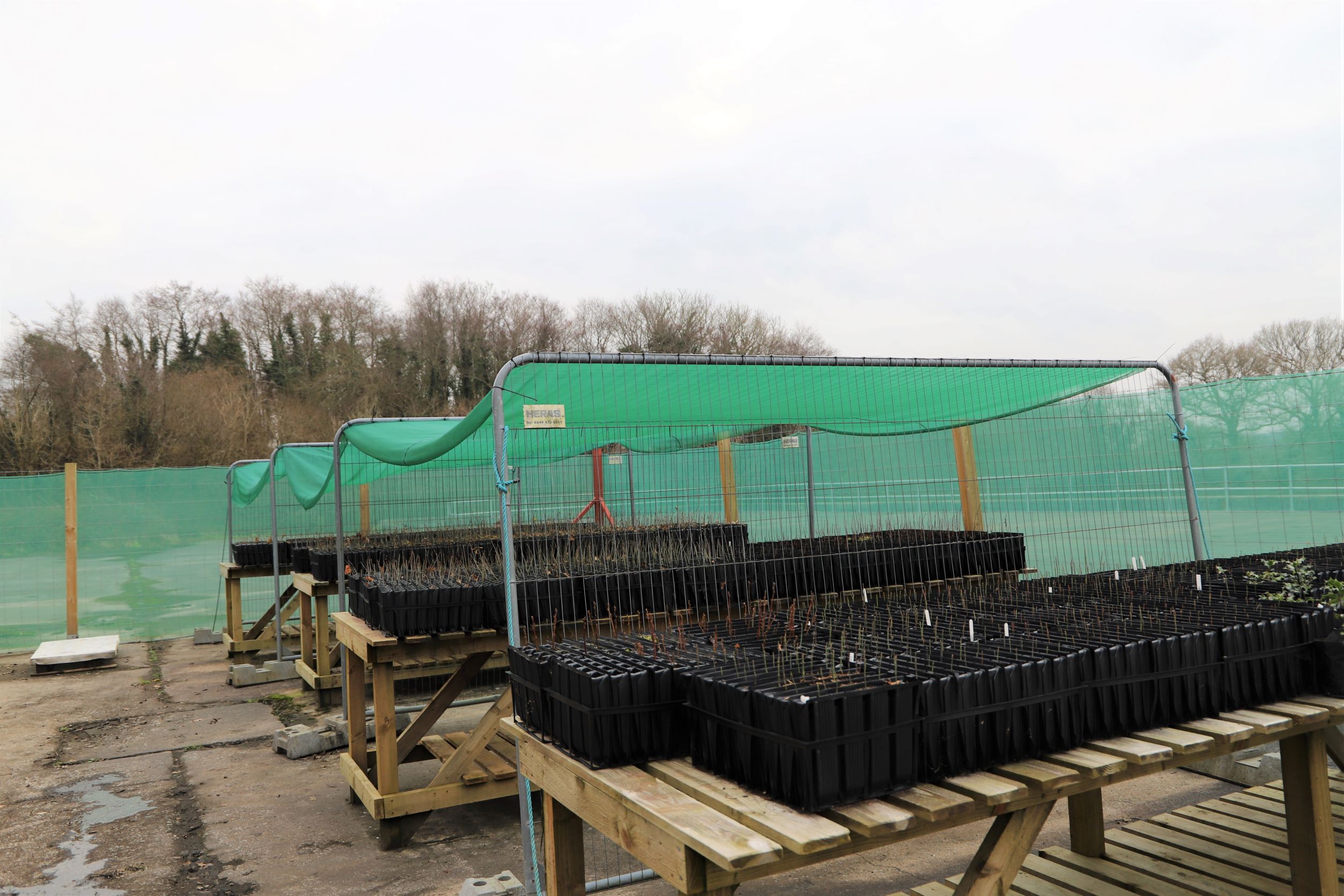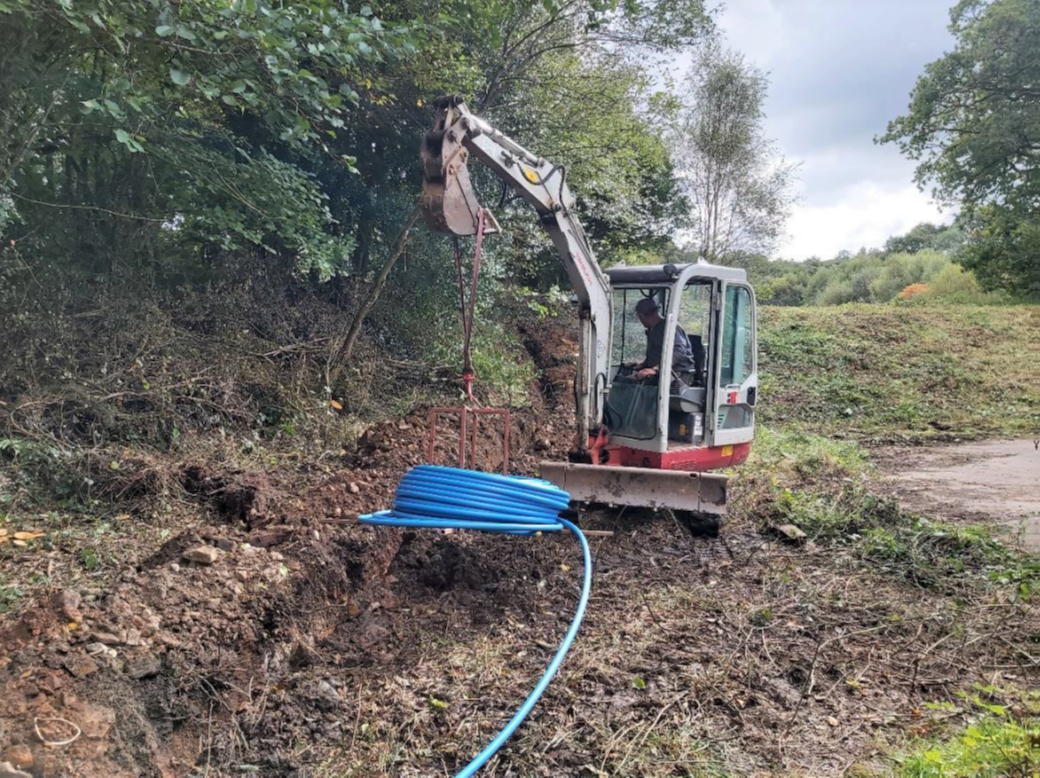Good things come in trees!
11th February 2022
 A tank, a pump and a pipe make all the difference at Meeth Quarry Nature Reserve.
A tank, a pump and a pipe make all the difference at Meeth Quarry Nature Reserve.
What do you think of when someone mentions tree planting? Perhaps you think of commemorating someone by planting a tree in their honour. Maybe your mind instantly turns to deforestation, heartbroken orangutans trying to stop bulldozers from destroying their homes, and how planting trees will help heal the land. Some of us might think of certain brands of paper or toilet roll who promise you that with every purchase they’ll plant X-amount of trees.
But do you ever wonder where those trees come from?
Deep in the Devon countryside there’s a tree nursery that distributes at least 7,500 trees each year to help re-establish certain species’ populations across Devon. This is part of the Saving Devon’s Treescapes project which aims to plant and nurture 250,000 trees across the county in the face of the alarming changes that Ash Dieback is bringing.
 |
Volunteers collect seed from all over the county, and more volunteers at Meeth Quarry Nature Reserve cultivate them ready for distribution once the trees are big enough. This dedicated team has grown all sorts of trees and hedging plants including hawthorn, oak, crab apple, dog rose, holly and even local rarities such as the Devon whitebeam. Across Devon, farmers have been working hard to rejuvenate hedgerows to build habitats, especially for birds, so these plants have been invaluable. All the trees are planted in small pots, called cells, which are easy to distribute to planting sites without the roots drying out. |
The tree nursery is positioned on part of what is left of an old warehouse that used to store some of the 70,000 tonnes of clay the quarry used to extract in its 1990s hey-day. Now, just a raised concrete platform is all that’s left, and it’s on here that the saplings can enjoy everything they need – light, water and nutrients.
The water part was proving a bit of a chore though. The base of the old warehouse is quite a distance away from the nearest supply of water (the mains tap back at the office) or collecting water from small shed roofs. Volunteers would have to fill a small tank on the back of a trailer, then take it up to the tree nursery, empty it into the water tank there, and repeat until the water tank was full. It was hard work and very time-consuming.
Then one day, one of the volunteers mentioned our Water Saving Community Fund to Ian, the reserve’s manager. He and Russell, another member of staff, put their thinking caps on and came up with an ingenious solution.
|
Their idea was to attach a 10,000 litre tank to the guttering of their workshop building so they could collect rainwater from the roof. They’d then attach a pump to the tank which would send the water up to the nursery where they’d attach a hose and fill the water tanks from that. With this plan, they applied to us, and we were only too happy to support the amazing work the team there are doing there. This also included an interpretation panel at the nursery entrance explaining the new system and why it’s vital for everyone to be more efficient with water use at home and work. |
 |
Zofia, one of DWT’s conservation trainees, explained how volunteers banded together to clear the scrub round the back of the building so that a contractor could come and lay the pipe. “The best thing about this project was having the experience of the installation and doing some plumbing work. I learnt new skills that I wouldn’t otherwise have had the opportunity to.”
Caroline, another conservation trainee, said the best bit for her was seeing how much water can be harvested. “After we’d installed it, we had a night of really heavy rain, and when we came back in the morning, the tank was already a third full!” Ian added that he reckons it takes about four days of rain to completely fill the tank. That’s 10,000 litres of water saved in just four days!
With so much water to use, the Trust purchased a second water tank to house water up at the nursery. Each one holds just under 1000 litres. Everyone said how much easier it was to water the trees now. From their first year they currently have about 4,000 saplings in their care.
The next stage of their plans is to install an automatic watering system. But for now, Russell says that “DWT is immensely grateful to South West Water for its generous support of this vital work.”
If you live locally to Meeth and would like to volunteer to help support our Community Tree Nursery, please contact jatkinson@devonwildlifetrust.org.
The best part is that you can go and visit!
DWT took on management of the nature reserve in 2012, nine years after it stopped being a working quarry. The previous owners had allowed the land to be reclaimed by nature, including letting surface water flood the quarry into the lakes you see today. Ian, who has been managing the site since the take-over has continued to let nature do its own thing. Together with all the volunteers, staff and contractors he works tirelessly on the important conservation needed to look after this special place. The reserve is now home to lots of wildlife, including butterflies, bats, deer, otters, foxes, and all sorts of birds. And, of course, many different types of trees!
For further information please contact:
For further information on Meeth Quarry Nature Reserve, please visit: Meeth Quarry Nature Reserve | Devon Wildlife Trust
For more ideas on how you can save water in your home, click here.
